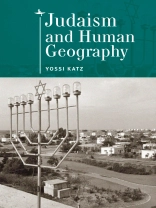Judaism is a religion and a way of life that combines beliefs as well as practical commandments and traditions, encompassing all spheres of life. Some of the numerous precepts emerge directly from the Torah (the Law of Moses). Others are commanded by Oral Law, rulings of illustrious Jewish legal scholars throughout the generations, and rabbinic responsa composed over hundreds of years and still being written today. Like other religions, Judaism has also developed unique symbols that have become virtually exclusive to it, such as the Star of David and the menorah. This book argues that Judaism impacts human geography in significant ways: it shapes the environment and space of its believers, thus creating a unique “Jewish geography.”
Tabla de materias
Table of Contents
Introduction
1. The Implementation of Jewish Religious Law in the Building of Neighborhoods and Agricultural Settlements in the Land of Israel
2. Environmental Concerns in the Bylaws of Jerusalem’s First Neighborhoods
3. The Agricultural Settlement Attempt in Kfar Uriya
4. The Religious Kibbutz Movement and Its Credo
5. Ha Poel Ha Mizrachi Movement and Urban Religious Settlement in the Land of Israel
6. Incorporating Jewish Law in Israel’s Land Law, 1969
7. The Chabad Movement and Beit Moshiach on 770 Eastern Parkway, New York
8. “Jewish Toronto”: Street Names, Signs, and Symbols in the North of Metropolitan Toronto
9. The Failure of Jewish Agricultural Settlement in Western Canada
Bibliography
Sobre el autor
Yossi Katz, winner of the 2016 Israel Prize in Geography, is a professor in the Department of Geography, Bar-Ilan University, Israel. Most of Katz’s research work relates to various issues of settlement, society, state, and community in the contemporary history of the Land of Israel and the State of Israel.












